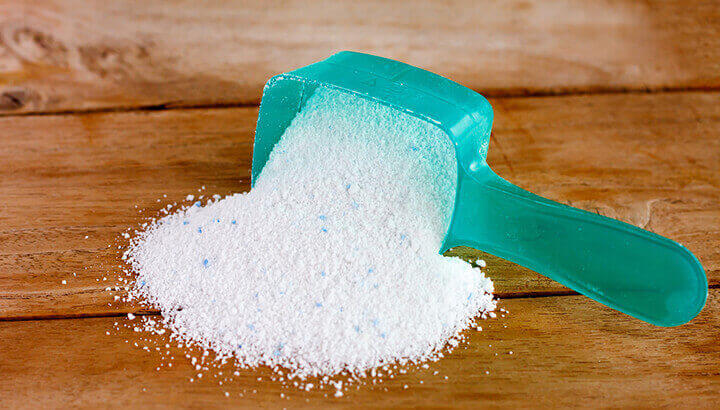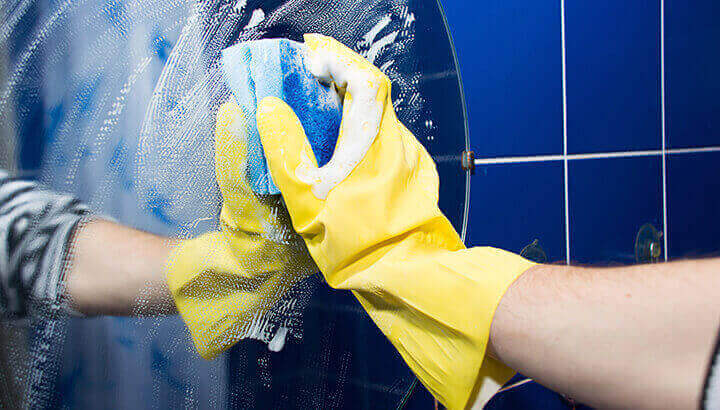
Most of us are aware of the fact that many of the products we purchase contain harmful ingredients. This includes beauty products, cleaning products and more. But what exactly is in these items? And what makes these chemicals so harmful? Here is some important information you’ll want to know about chemicals for the next time you go shopping.
Antifreeze
Of course, antifreeze comes in handy, as it helps to protect your car’s engine. But it can be pretty harmful, as well. If swallowed, it is poisonous and can damage the brain, kidneys and heart. While this may not seem like too much of an issue (since most of us aren’t planning on drinking antifreeze anytime soon), inhaling it can lead to dizziness and spilled antifreeze could potentially be ingested by pets.
When purchasing antifreeze, look for products that contain propylene glycol, which is generally safer than ethylene glycol.
Laundry detergent

Detergent seems pretty harmless — and indeed, we use it to wash our clothes, which we wear right against our skin every day. But some laundry detergents are less than ideal and contain cationic, anionic or non- ionic solutions. When swallowed, they can cause nausea, vomiting, shock, convulsions and even coma.
Again, this is mostly an issue for pets and young children. The good news, however, is that there are a number of non-toxic laundry products available, and even some fairly straightforward recipes for making your own.
All-purpose cleaners
Yes, they’re convenient and good at cleaning up a pretty wide range of messes. But some of them contain a whole cocktail of potentially harmful ingredients. To start, many of them contain ammonia, which can lead to burns and rashes on the skin, and irritate the lungs and eyes. They can even create chloramine gas, which is deadly when combined with bleach and products that contain chlorine.
Ethylene glycol monobutyl acetate is another ingredient found in many all-purpose cleaners. It’s poisonous when swallowed, and can damage the heart, brain and kidneys. And sodium hypochlorite can damage the skin, the lining of the nose and mouth and the throat. And its fumes can irritate the eyes and respiratory tract.
There are, of course, cleaner products available. Or you could simply clean surfaces with a vinegar solution. Baking soda mixed with water can also be used for cleaning.
Bleach
Many of us turn to bleach to clean up tricky messes, but it is definitely one of the chemicals in the home that we need to be mindful of. Bleach contains a sodium hypochlorite solution that can be corrosive to the skin. It can also irritate the eyes and respiratory tract.
It should never be mixed with other cleaners, especially anything with ammonia, as well as toilet bowl cleaners and drain cleaners. As mentioned above, doing so can create a gas that can lead to serious breathing problems, and can even be deadly.
Oven cleaners
No one likes cleaning baked-on messes. But many oven cleaners include lye, which contains either sodium hydroxide or potassium hydroxide. These ingredients can burn the skin and eyes, and they’re corrosive and deadly if swallowed. Some oven cleaners come in aerosol cans, which is even worse because this disperses the chemicals and increases the risk of inhalation. When purchasing an oven cleaning product, read the ingredient lists and choose one that does not contain lye.
Mold and mildew removers

It’s important not to allow mold and mildew to build up because both can cause very real health issues. But it’s equally important to remove mold and mildew in a safe way. Many removers contain chlorine and alkyl ammonium chlorides, which can cause trouble breathing and can burn the throat when swallowed. There are non-toxic products available, or you can get rid of mold and mildew using a vinegar solution and/or baking soda combined with water. Of course, if you have a more serious case of mold, or if the mold is inside the drywall, it might be necessary to consult with a professional mold removing company.
There are non-toxic products available, or you can get rid of mold and mildew using a vinegar solution and/or baking soda combined with water. Of course, if you have a more serious case of mold, or if the mold is inside the drywall, it might be necessary to consult with a professional mold removing company.
Antibacterial cleaning products
It’s true, of course, that some bacteria can make us very sick. But the ingredients in many antibacterial cleaners can be harmful, as well. Like all-purpose cleaners, many of these contain multiple problematic ingredients.
Some of them include ammonia and lye, which are discussed above. They also contain cresol, which can damage the liver, kidneys, spleen, pancreas and lungs. Phenol can damage the central nervous system, have negative impacts on the circulatory system, and is suspected of being carcinogenic. And pine oil can be irritating to the eyes, nose, mouth and throat.
It is also thought that these cleaners may actually promote the development of resistant bacteria. And while there’s not enough research on this yet, some fear that antibacterial products can have undesirable implications for probiotics, or good bacteria, as well.
Furniture polish
There’s certainly nothing wrong with wanting your furniture to look as good as possible. Having a beautiful, inviting home is important for many of us. But many furniture polishes contain ammonia, naphtha, nitrobenzene, petroleum distillates and phenol. These ingredients can irritate the throat, windpipe, eyes and lungs. Instead, try polishing your furniture with beeswax.
Beauty products

The toxins in many beauty products alone could be a topic for an entirely different blog. Needless to say, many of them contain phthalates, parabens, heavy metals and other harmful ingredients that are thought to be associated with a wide range of potential negative health effects.
Some imported skin creams have been found to contain mercury, and some lipsticks have been shown to contain lead. Fortunately, there are more and more natural beauty products popping up, and in some cases, it is possible to make your own.
Of course, this is not a completely exhaustive list. There are many other chemicals in the home that contain potentially harmful ingredients. If you are concerned about a product you typically buy, it is advisable to do a little research in order to gain an understanding of how safe it is. And luckily, an increasing number of companies are offering non-toxic alternatives, so it is somewhat easier to avoid most of these scary ingredients these days.
— Sarah Cooke

